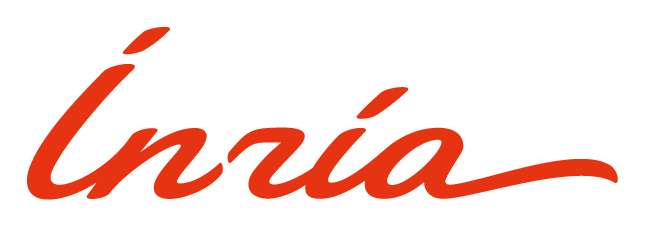This meeting will focus on interactions with biology. Our guests will be three colleagues from ITI IMCBio+ (Integrative Molecular & Cellular Biology). Ivan Tarassov, director, will give a brief a presentation of the themes covered by the ITI IMCBio+, followed by two short research talks by Joseph Schacherer and Nacho Molina.
Presentation content: Click here to see the complete presentation
"What is the ITI IMCBio+" - Ivan Tarassov
About the speaker: Ivan Tarassov obtained his Master degree in Biochemistry & Molecular Biology in 1986 and PhD in 1990, both in Moscow State University. In 1992, he moved as a Postdoc (FEBS & EMBO fellowships) in Strasbourg, in IBMC. In 1996, he was recruited in the CNRS as CR1 and founded his own team in the GMGM unit. Between 2013 and 2023 he was the Director of the GMGM unit. In 2011, he founded the MitoCross labex and in 2022-2024 he is the coordinator of the ITI IMCBio+. His main scientific interests are mitochondrial functions and dysfunctions and mitochondrial diseases.
Presentation content: Click here to download the content of this talk
"Modeling Gene Regulation Using Biophysics-Informed Deep Learning on Single-Cell Multi-Omics Data" - Nacho Molina
Abstract: Biology is currently undergoing an incredible revolution, enabled by the emergence of single-cell genomics. This advancement allows for the characterization of all cell types in the human body, leading to a systematic understanding of collective cell function in health and disease. However, computational biology faces the challenge of extracting valuable information and generating reliable predictions from this wealth of data. While deep learning methods have proven to be powerful tools for clustering and denoising data, their black-box nature limits interpretability and prediction power.
To address this limitation, we present an innovative approach that combines an interpretable variational autoencoder with biophysical modeling to characterize gene regulation using single-cell sequencing data. Our model, trained on large-scale datasets, identifies key regulators responsible for the gene program of each cell type. Additionally, our approach infers gene-specific non-linear response functions that capture complex combinatorial regulations. Moreover, we applied our model to single-cell multiomics data of mouse embryonic stem cells, enabling a deeper quantitative understanding of gene expression dynamics throughout the cell cycle. Specifically, we estimated chromatin accessibility dynamics during cell cycle progression, cell-cycle dependent transcription and degradation rates for each gene, and identified key transcription factors driving the observed transcriptional dynamics.
In conclusion, our approach provides a powerful tool for analyzing and interpreting single-cell sequencing data, enabling deeper insights into the mechanisms of gene regulation.
About the speaker: Nacho Molina is a CNRS researcher and the group leader of the Stochastic Systems Biology Lab at the IGBMC in Strasbourg. With a background in theoretical physics, he pursued a Ph.D. in computational biology at the University of Basel where he received outstanding training in Bayesian statistics, machine learning, and gene regulation. After his PhD, he underwent postdoctoral training at EPFL where he developed a novel method combining stochastic processes with hidden Markov models to analyze transcriptional bursting in individual mammalian cells. Currently at IGBMC, the main research focus of his team lies at the interface between deep learning and biophysics, combining tools from both fields to develop mechanistic and interpretable large-scale models of gene regulation. This approach allows to analyze and integrate single-cell sequencing and imaging data and generate testable predictions based on causal mechanisms. Recently, the team has started a new line of research leveraging the strength in modeling gene expression dynamics, to understand the interplay between cell cycle regulation, pluripotency maintenance, and cell differentiation.
Presentation content: Click here to download the content of this talk
"Species-wide quantitative transcriptomes and proteomes reveal distinct genetic control of gene expression variation in yeast" - Joseph Schacherer
Abstract: Gene expression varies between individuals and corresponds to a key step linking genotypes to phenotypes. However, our knowledge regarding the species-wide genetic control of protein abundance, including its dependency on transcript levels, is very limited. Here, we have determined quantitative proteomes of a large population of 942 diverse natural Saccharomyces cerevisiae yeast isolates. We found that mRNA and protein abundances are weakly correlated at the population gene level. While the protein co-expression network recapitulates major biological functions, differential expression patterns reveal proteomic signatures related to specific populations. Comprehensive genetic association analyses highlight that genetic variants associated with variation in protein (pQTL) and transcript (eQTL) levels poorly overlap (3%). Our results demonstrate that transcriptome and proteome are governed by distinct genetic bases, likely explained by protein turnover. It also highlights the importance of integrating these different levels of gene expression to better understand the genotype-phenotype relationship.
About the speaker: Joseph Schacherer obtained his PhD in 2005 in molecular and cellular biology from the Louis-Pasteur University in Strasbourg, France. Following the completion of his PhD, he joined the laboratory of Leonid Kruglyak at the Lewis Sigler institute of Integrative genomics at Princeton University (New Jersey, USA), where he began work on genomic approaches to study population genomics and intraspecies phenotypic variation. In 2007, he was appointed as assistant professor of genetics and genomics at the laboratory of Genetics, Genomics and Microbiology (UMR7156, University of Strasbourg - CNRS). In 2013, he became team-leader and brought together an experienced team of researchers with expertise in population genomics, genetics, bioinformatics and data analysis crucial to set up high-throughput sequencing and phenotyping experiments and analyse the data generated. The group’s long-term goal is to use population and functional genomics to have a better insight into the rules that govern the genotype-phenotype relationship within species. Moreover, he was laureate of the National Institutes of Health (NIH) R01 grant program (2012, 2017 and 2023) and was awarded an ERC Consolidator Grant in 2018. He also led the 1002 yeast genomes project (http://1002genomes.u-strasbg.fr/). He was nominated member of the Institut Universitaire de France in 2016. And since September 2017, he is professor of genetics and genomics at the University of Strasbourg.
Presentation content: Click here to download the content of this talk







